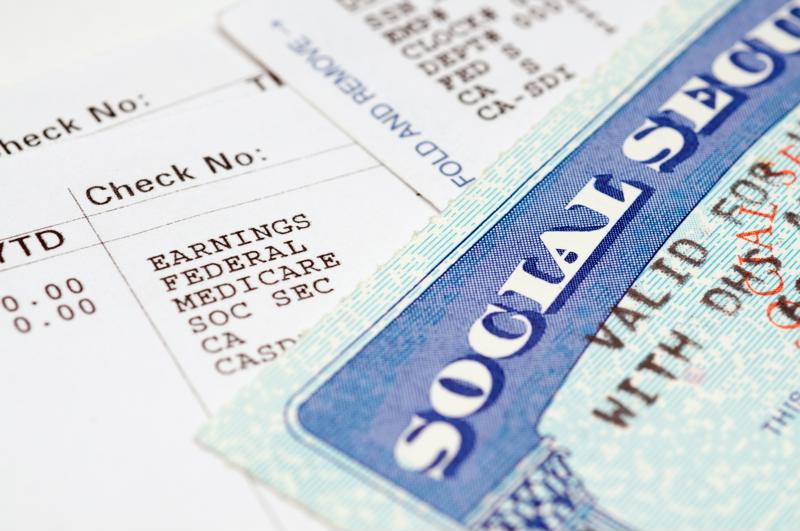
How to proceed if your business receives SSN no-match letters
In recent years, there has been a considerable uptick in the intensity and degree to which the federal government pursues enforcement of immigration laws. Business leaders in the U.S. have felt the effects of this particular priority shift in a number of ways, such as smaller annual caps on issuance of Department of Labor H-1B work visas that help domestic companies enlist foreign workers with exemplary tech skills for hard-to-fill IT positions.
During the last few months, a new wrinkle in this issue surfaced: resumption of the Social Security Administration's Employer Correction Request (EDCOR) notice delivery program. These messages, also called "no-match letters," are meant to notify employers of discrepancies between the SSA's existing data and recent corporate tax filings involving employee names, Social Security numbers or both. If you started a business between 2013 and now, it's possible you've never seen a no-match letter; other company leaders may have forgotten how the process works given how much information they deal with on a regular basis. Here, we'll take a look at the essentials of no-match letters (or EDCOR notices, if you prefer) and outline how to deal with them step by step if your business receives any:
The 411 on EDCOR
According to the Society for Human Resource Management, the SSA started sending no-match letters to employers in 1993 and did so without interruption until the policy got tied up in a 2007 lawsuit and was ultimately canceled in 2012, only to begin again in March 2018. SHRM noted that the White House administration under President Donald Trump saw the letters as another valuable tool for enforcing immigration and employment laws.
What the notices do is simple, informing business leaders that at least one of their employees' names as listed in tax returns for the latest year doesn't match up with the SSN it was previously associated with, or vice versa. They don't include any suspicion or assumption as to the reasons for such mistakes and are delivered just the same whether the issues they describe are a bunch of typos or potential fraud. In fact, the letters don't even include the names and SSNs that the SSA has deemed problematic. A company's leader or HR department head must use the federal agency's Business Services Online portal to learn the specific details of the discrepancies found within the organization. So if your business hasn't registered with that site already, you may want to do so sooner rather than later.
The SSA makes a point about these notices that's well worth repeating here: No-match letters aren't meant to imply that an employee or their employer has committed any intentional offense worthy of any sort of punishment, be it termination or some less serious demerit. As the notice's actual text states, "This letter does not address your employee's work authorization or immigration status."
Handling no-match letters the right way
There's no reason for you to panic if you receive one of these notices from the SSA. Chances are reasonably high that the mistakes the agency wants you to correct are basic clerical goof-ups. But no matter the cause, you're required to address them so as not to create compliance-related headaches for yourself and your company. Follow the steps below to take care of such issues as simply and efficiently as possible:
- Log on to the SSA's BSO website (or register if you haven't already, and then log in). Make sure your BSO account, which covers a number of different services including W-2C submission, is equipped with the "View Wage Report Name/SSN errors" function; add it if it isn't.
- Enter one-time activation codes and then look over the errors in question.
- Check your own records directly and verify the errors are as the SSA claims. The agency wouldn't deliberately make a false claim, of course, but as the National Immigration Forum pointed out, it wouldn't be the first time SSA employees made mistakes of their own that led to no-match letters.
- Once you've determined legitimate discrepancies, inform the employees involved of such issues and work to resolve them. While the SSA has a form letter on its website employers can use to let workers know (and as a record of the matter), it'll likely be more successful for all involved if you handle it in person.
Even if the situation involving one or more workers' discrepancies with the SSA is more complicated than a mere typo, you owe it to them to afford a grace period in which to contact the SSA and rectify the mistake. The SSA recommends a 60-day time frame. If the employee doesn't act before then, you don't have much else to do other than inform the SSA of that fact, and your obligation is done – unless you find other evidence of full-fledged fraud when you dig deeper into the backgrounds of staff about whom these questions were raised.
The importance of "finding other evidence" can't be overstated: No-match letters state point-blank that they don't constitute evidence of document- or identity-related fraud on their own. If you fire someone solely based on one of these notices, you open yourself up to the possibility of being sued for discrimination or incurring fines and other penalties, so you need to be certain your action was valid. With a little luck, though, this won't be necessary and no-match letters will just require routine resolution of clerical mistakes.
Uncategorized
